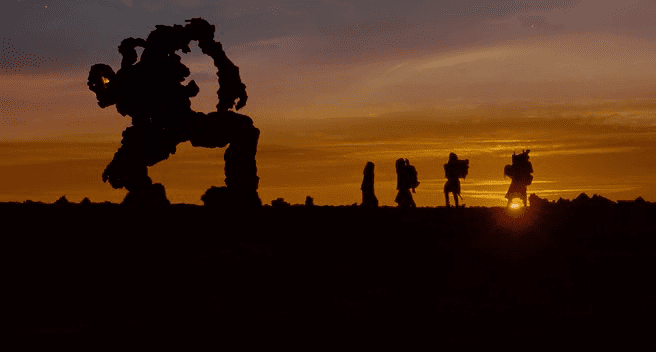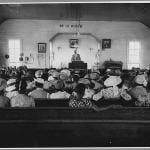Quick trivia question: Which character from the biblical story of Moses appears in the movie Noah but not in Exodus: Gods and Kings? The answer is below the jump.
Give up?
It’s the big guy in this picture — that’s right, the rock monster:
Now, of course, there are no rock monsters in the Bible. But there are giants, and the rock monsters in that film were basically based on the biblical giants.
The giant in that particular scene is named Og — and that is also the name of a giant who was defeated by Moses and the Israelites as they approached Canaan.
The account in Numbers 21 says nothing about Og’s size, only that he was a king:
After Moses had sent spies to Jazer, the Israelites captured its surrounding settlements and drove out the Amorites who were there. Then they turned and went up along the road toward Bashan, and Og king of Bashan and his whole army marched out to meet them in battle at Edrei.
The Lord said to Moses, “Do not be afraid of him, for I have delivered him into your hands, along with his whole army and his land. Do to him what you did to Sihon king of the Amorites, who reigned in Heshbon.”
So they struck him down, together with his sons and his whole army, leaving them no survivors. And they took possession of his land.
The account in Deuteronomy 3 adds the detail that Og was a “Rephaite” — a member of a race of giants — and adds that he had a really long bed:
Next we turned and went up along the road toward Bashan, and Og king of Bashan with his whole army marched out to meet us in battle at Edrei. The Lord said to me, “Do not be afraid of him, for I have delivered him into your hands, along with his whole army and his land. Do to him what you did to Sihon king of the Amorites, who reigned in Heshbon.”
So the Lord our God also gave into our hands Og king of Bashan and all his army. We struck them down, leaving no survivors. At that time we took all his cities. There was not one of the sixty cities that we did not take from them—the whole region of Argob, Og’s kingdom in Bashan. All these cities were fortified with high walls and with gates and bars, and there were also a great many unwalled villages. We completely destroyed them, as we had done with Sihon king of Heshbon, destroying every city—men, women and children. But all the livestock and the plunder from their cities we carried off for ourselves.
So at that time we took from these two kings of the Amorites the territory east of the Jordan, from the Arnon Gorge as far as Mount Hermon. (Hermon is called Sirion by the Sidonians; the Amorites call it Senir.) We took all the towns on the plateau, and all Gilead, and all Bashan as far as Salekah and Edrei, towns of Og’s kingdom in Bashan. (Og king of Bashan was the last of the Rephaites. His bed was decorated with iron and was more than nine cubits long and four cubits wide. It is still in Rabbah of the Ammonites.)
The defeat of Og was a pretty big deal, since the land the Israelites took from him was some of the first land they settled on. His defeat is referenced several times in the Hebrew Bible — in Joshua, Kings, Nehemiah and even a couple of Psalms.
Because Og was a giant, there are a number of Jewish legends that link him to the giants of Noah’s day. Some say Og had been around since before the Flood, and indeed they even speculate as to how he might have survived the Flood. At least one tradition says Og promised to serve Noah in exchange for a ride on the outside of the Ark.
Traditions like these seem to have informed Aronofsky’s film. Og is, in fact, the only rock monster willing to help Noah at first in that film, until the magic forest appears and convinces all the others that Noah is truly doing the Creator’s work.
Aronofsky deviates from the Jewish tradition in a few significant ways, though.
First, in the Book of Genesis, the Book of Enoch and similar texts, the giants were the offspring of angels who mated with human women, but in Aronofsky’s film, the giants are the angels who come down to Earth — and there is no mating involved.
So in Aronofsky’s film, Og is not just a giant, but a fallen angel.
And second, the angels in Aronofsky’s film eventually redeem themselves by helping Noah and sacrificing their lives for him — and thus, Og sheds his shell of rock and returns to Heaven in his original angelic form, just before the Flood arrives.
So the Og of Aronofsky’s film doesn’t survive the Flood, and doesn’t stick around for another thousand years or so until Moses’ day.
And thus, ironically, the reason this character even exists in the traditions that Aronofsky used has been written out of the film. Ah well.
As for Og’s encounter with Moses and the Israelites, I am not aware of any film that has ever depicted this. Everyone knows about David killing Goliath, but the role played by all of the other giants of that era has yet to be dramatized.
Filmmakers, you know what to do. Mash-up artists, you too.












